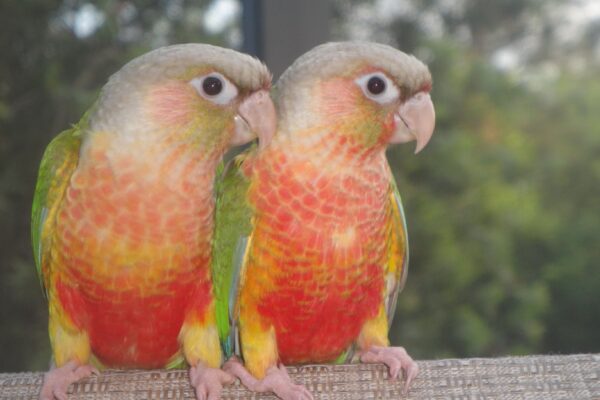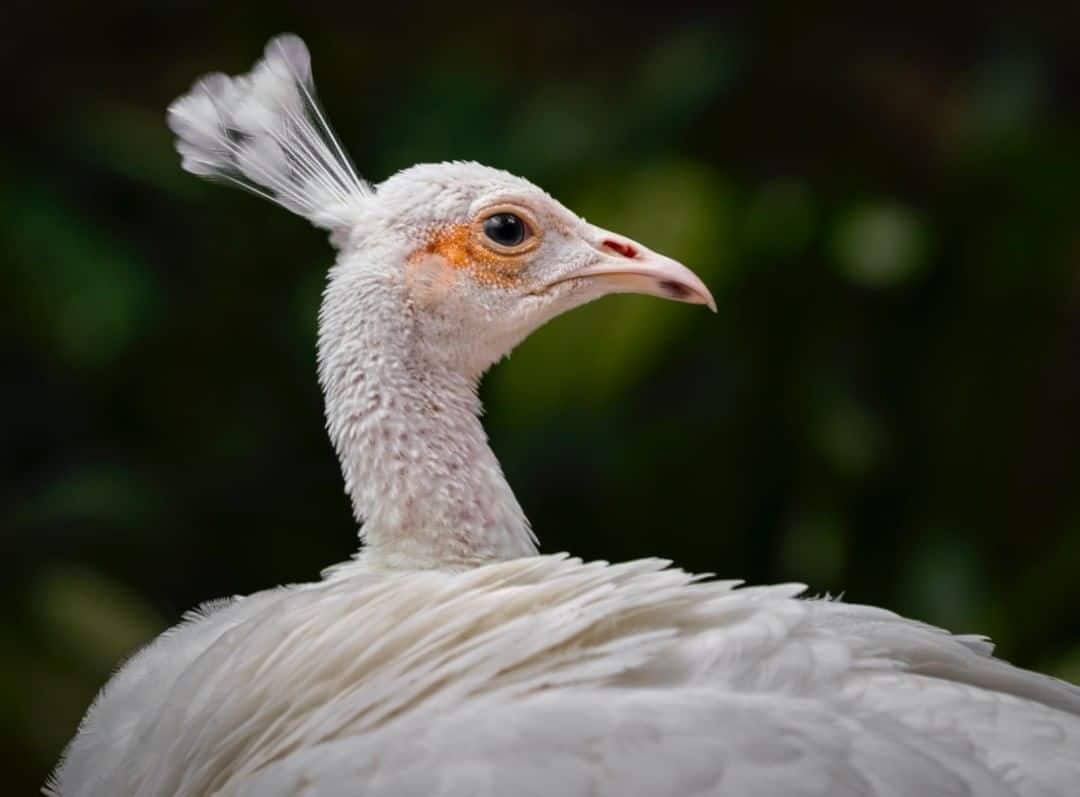Penguins are unlike any other animal because of their nearly human-like posture, tuxedo-like plumage, and small wings at their sides. Ever questioned if they are really birds at all? Discover some amazing information about one of the planet’s most unusual marine species by reading along with us!
Basic Penguin Classification
Just in case you were wondering, yes, penguins are birds. Though they belong to a particular bird family that is mostly restricted to the icy waters of the Southern Hemisphere, they are classified under the same class (Aves) as anything from emus to eagles. According to taxonomy, the Spheniscidae family has six genera and eighteen extant species of penguins.
A pair of Emperor Penguins – Penguins are distinct from all other creatures by their nearly human-like traits, which include their upright posture, tuxedo-like plumage, and short wings at their sides.
Features of Birds and Penguins’ Place in Them
Penguins have all the classic features of the avian body plan, despite their unique physical makeup and way of existence. To find out more about the anatomy of penguins, keep reading.
Anatomy in General
The enormous 90 lb (40 kg) Emperor Penguin (Aptenodytes forsteri) and the tiny 3 lb (1.5 kg) Little Penguin (Eudyptula minor) are the two sizes of penguins. All Penguins have knees, despite their peculiar look of having short legs.
Penguins’ skeletal structures do, however, vary from those of other birds in one noteworthy and intriguing aspect. These birds don’t have hollow bones because, unlike flying birds, they don’t need to be as light. Instead, a thicker body allows them to dive.
feathers
Penguins have unique feathers that are tailored to their aquatic lifestyle and provide them with warmth both underwater and on land. But like other birds, they have to molt, and the process might take many weeks to complete.
Penguins possess four distinct kinds of feathers: contour feathers, plumules, filoplumes, and afterfeathers, despite not being able to fly. The uropygial (preening) gland secretions are used by these deep-diving birds to preserve and waterproof their feathers.
A beak
Fish, squid, and krill that penguins capture underwater are their main sources of food. Their morphologies vary depending on the species, but this particular diet necessitates a specialized beak.
Macaroni Penguins (Eudyptus chrysolophus) and other Eudyptus species have substantially shorter and stouter bills than King Penguins (Aptenodytes patagonicus), which have long, thin, and slightly downcurved beaks. Penguins possess exceptional spiky tongues that they use to hold onto their food.
Putting Out Eggs
Penguins, like other birds, deposit eggs with hard shells. In most animals, both parents incubate the one or two eggs that they deposit. Large, thick-shelled eggs are laid by penguins; the smallest species’ eggs are around 2 inches (5 cm), while the largest species’ eggs measure over 5 inches (12 cm) and weigh a pound (450g).
Birds Without Wings: Penguins and Their Companions
Despite being the most varied group, penguins are not the only flightless birds in the world today. Less than one-third of the world’s species of flightless birds are comprised of the eighteen distinct species that belong to this family. Penguins lost their ability to fly in favor of swimming and diving as they adapted for a life in the water.
Similar circumstances have caused the loss of flight in other seabirds. An intriguing example of a living bird is the Flightless Cormorant (Nannopterum harrisi) found in the Galapagos Islands; the Great Auk (Pinguinis impennis) was driven to extinction in the middle of the 1800s.
Not only swimming birds may benefit from being flightless. A number of terrestrial birds have given up flying in favor of living on ground. Ratites with amazing running speeds, such as ostriches, rheas, emus, and cassowaries, have grown into enormous birds of prey.
Aspects of Evolution
A fossil of the long-extinct flightless Waimuna Penguin was found in New Zealand, which is thought to be the place where penguins first originated more than 60 million years ago. Over 50 species have developed and been extinct from the time they first appeared to the present, including very large birds like Kumimanu, which may have weighed over 330 pounds (150 kg)!
Penguins are an excellent illustration of convergent evolution, which is the process by which entirely different species adapt to coexist in the same habitat or make use of a specific resource. Penguins, like seals and dolphins, have developed flippers and a streamlined body form to help them traverse the maritime environment.
Off South America’s west coast, near the Equator, dwells the Galapagos penguin.
Penguins in Their Original Environments
Penguins are restricted to the maritime environment and its environs. They arrive on land to rest, molt, and build their nests, where they deposit their eggs in tunnels, behind foliage, or, in the case of the Emperor Penguin, directly on their feet.
Although some species go far further north, reaching the shores of Africa, New Zealand, and South America, the majority of penguin species are found in the Southern Hemisphere at high latitudes.
With their black underparts and white above for concealment, small, streamlined wings for swift swimming, and webbed feet for maneuvering on land and underwater, penguins are well adapted to their surroundings.
Typical Myths
Although penguins do need chilly water, their range extends beyond the frigid regions around the South Pole. The Galapagos Penguin (S. mendiculus) inhabits the Equator off the West Coast of South America, whereas the African Penguin (Spheniscus demersus) breeds along the coast of South Africa, where average highs are in the mid-80s Fahrenheit (about 30°C).
To find out more about the range and habitat of penguins, check out this guide.
Another prevalent misperception about penguins is that they are furry animals. Penguins have feathers, much like all other birds, but their plumage is tailored for swimming rather than flying. Penguins have wings even though they are not able to fly. To move forward underwater, these birds flap their wings.
The African penguin breeds in South Africa’s coast, where average yearly temperatures are in the mid-80s Fahrenheit, or about 30°C.
Preservation and the Contemporary Penguin
The IUCN Red List states that most penguin species have seen significant declines, with five of them being classified as endangered. Two main issues are declining fish supplies as a result of overfishing and global warming.
We should all be worried about the survival of penguins, even if many bird watchers may never get to see one in the wild. Reducing your carbon footprint and solely supporting sustainable fishing are two ways you may contribute.
FAQs:
Why Are Penguins Not Able to Fly?
Penguins have evolved to be proficient swimmers, but this specialization has come at the expense of their ability to fly. Their wings are too short, their bodies too strong, and their bones too solid for them to be able to remain in the air.
Is it possible for any penguin to fly?
The Speniscidae family has 18 extant penguin species, none of which are avian. It is thought that these specialized birds lost their ability to fly at the same time as the final extinct non-avian dinosaurs.
What distinguishes penguins from other birds without wings?
Penguins’ limb and foot development is different from that of flightless terrestrial birds. Penguins are comparatively ungainly on land, whereas ostriches and other flightless land birds have long legs with strong muscles for speed and endurance.
Do penguins live longer than other birds?
Penguins have comparatively lengthy lifespans—some species have been known to live up to thirty years. That could be a lot longer than for smaller land birds, but seabirds often have a lengthy life. While some gulls may live over 40 years, certain albatrosses can live over 70 years.
Final Thoughts
That’s right, penguins are actual birds! Even while these amazing birds may not resemble your typical songbird in appearance or behavior, they yet possess wings, feathers, bills, and several other distinguishing physical characteristics. They have survived for millions of years in some of the worst habitats on Earth because to their distinct habits and remarkable physical adaptations.






